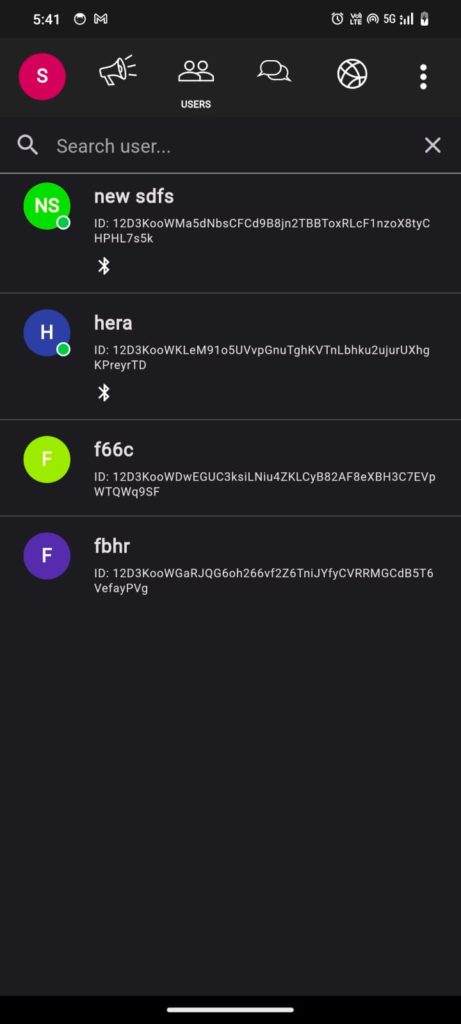This post is the final post in the continuation of this blog series. In part 2, I discussed the theory behind Qaul BLE support for Linux and a walkthrough for creating a BLE GATT server, advertisement of services, and scanning of devices advertising qaul services. We also discussed the theory of message transfer through BLE GATT characteristics. Please refer to that blog before proceeding.
In this blog, we will explore the implementation and low-level design of the BLE support in greater depth.
Correction in the previous Blog
In the previous blog, while creating the GATT server, we defined two services:- “main_service” and “msg_service” with their respective characteristics. The issue here is, that multiple services lead to longer advertisement messages that are only supported by extended advertisements. So, for compatibility, we are using only “main_service“, which encapsulates both characteristics:- “mainChar“, and “msgChar” for normal advertisements. Rest all things are same.
Introduction
We will begin by configuring services and characteristics of the qaul device to send libqaul messages to other devices and spawn a new thread for receiving messages from all nearby devices. For byte-loss transfer, we are enclosing our data inside delimiters “$$” and then breaking it into byte arrays. On the spawned message listener, we receive messages from all nearby qaul devices and separate the messages into a map of type <qaul_id, message>. The message starts at “$$” and ends when ending “$$” is encountered. The message is then sent to libqaul for decoding.
Message receiver
The message is received by “msgChar” when some other device overwrites the value of this characteristic. While configuring msgChar, we created a msg_charcteristic_ctrl which emits an event, CharacteristicControlEvent::Write(write), io_write by characteristic. On accepting the write request into read_buffer which is then sent to ble_message_sender for further processing of bytes. Ble_message_reciever receives the byteArray in the set of 20 and maintains a map of qaul_id v/s message received till now. As soon as ending $$ is encountered, the message is sent to libqaul.
The whole above architecture works by spawning two new threads, one for receiving data from other devices and the other for manipulation of received bytes, for loss-less transfer of bytes.
Message Sender
On discovering a nearby qaul device emitting the same main_service and read_char as any qaul device, the libqaul starts to send routing messages at regular intervals for other devices to get updated on routing tables. All other public or personal messages are also transmitted similarly.
On receiving a “DirectSend” request from libqaul, ble_module adds delimiters(“$$”) to the start and end of the message. Then it breaks the message into arrays of 20 or fewer bytes each and pushes each into a queue. The Gatt client then connects to the specified server and tries to io_write the message into the value of the characteristic of the server which will eventually trigger the Write event of characteristic_ctrl.
Also, while writing data to another device, the GATT client also updates its list for last_found_time for out_of_range_checker.
Result :
We were successful in creating a reliable connection between Android 33+ and Linux devices with nearby device discovery and message transfer using ble_module.

Device discovered by Android ble_module.

Device discovered by Linux ble_module.
Messages are Successfully sent and received by both devices.
Images for BLE Message from Android to Linux

Message sent by Android.

Message received by Linux.
Images for BLE Message from Linux to Android
Message sent by Linux.

Message received by Android.

Limitations:
The above implementation works well for any Linux device with Bluetooth Adapter version >= 5.0 and Android SDK version >= 33. The absence of any of the above conditions would lead to the loss of some random bytes from the message leading to the failure of this protocol.
Conclusion
The implementation of the Bluetooth Low Energy module using Bluez is limited in extensibility and reliability, especially within the planned architecture. The instability of Linux Bluetooth can cause message loss if conditions aren’t met, indicating a need for further optimization of the BLE module and the underlying protocol to enhance robustness and reliability.
While working on the Qaul project and implementing the ble module, I learned a lot about peer-to-peer communication, routing, and Bluetooth in general.
I would like to express my sincere gratitude to my mentors, Mathias Jud and Breno, for allowing me to participate in GSoC 2024 and for their invaluable guidance throughout this project. I am also grateful to Andi and all the Freifunk members involved with GSoC for making this project possible.
This marks the end of my GSoC’2024 project, but as I mentioned earlier, there is still work to be done. If you have any questions, please feel free to reach out. I hope you found this project as rewarding and enjoyable as I did!
You can refer to PR for reference.



